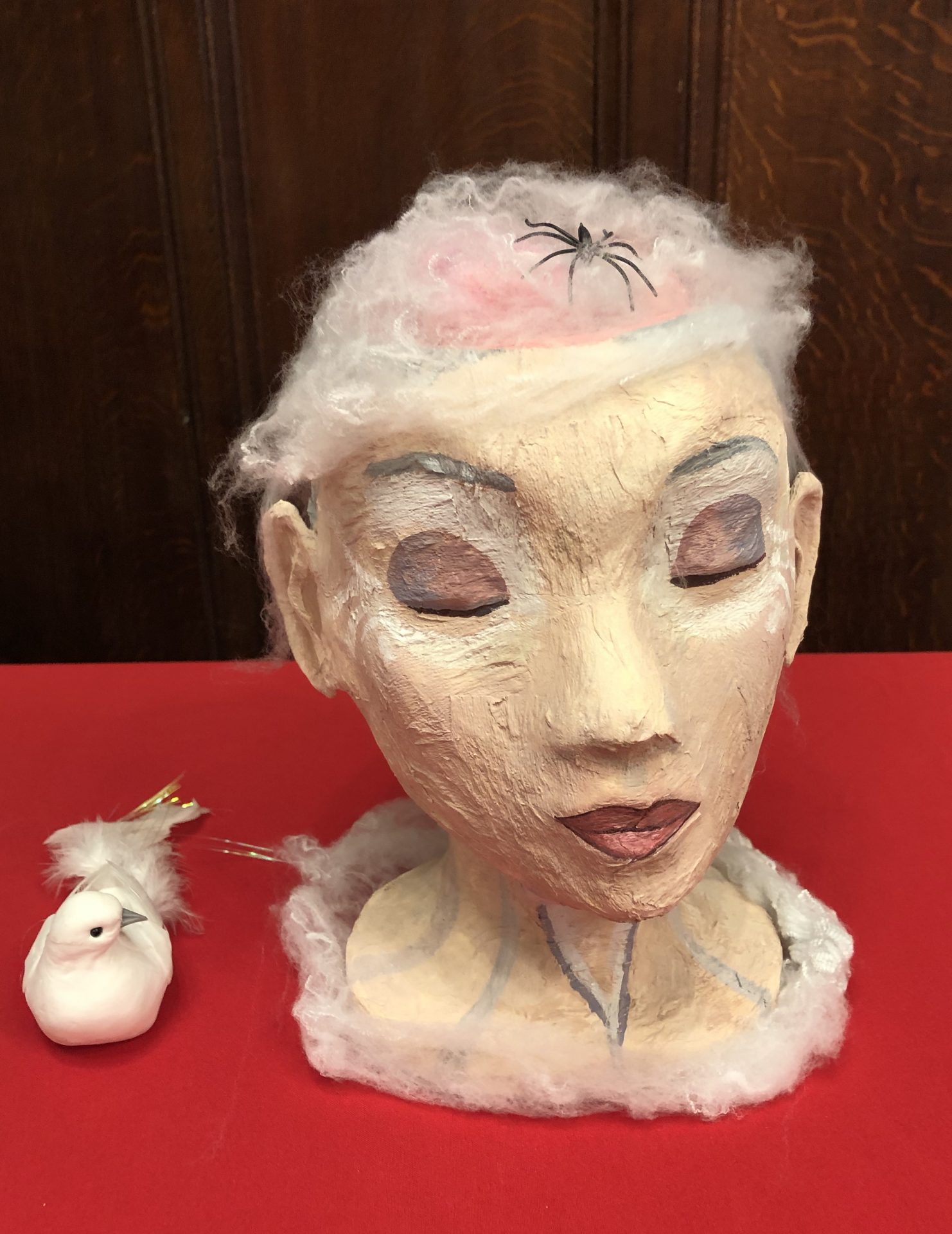A sculpture exploring the psychosomatic presentation of mental illness, inspired by an elderly woman met during a GP placement who described her mental illness as ‘a spider which weighed her down and trapped her’.
The spider placed upon the exposed brain in this piece is in one sense the experienced manifestation of this patient’s illness, but also the embodiment of anxiety and fear. The web portrays mental distortion, contributing to clouded judgement in seeking help (as do the closed eyes). Sculptural form seemed the most applicable to our group as it allowed the complex three-dimensional expression needed to portray the complexity of the topic. Furthermore, using papier- mâché allowed the representation of wrinkled skin, showing the physical stress that such conditions can have on a person over time.
Fleeting hope and courage in facing the outside world was represented by the dove placed nearby.
Exhibited at the Foundations of Medicine Student Conference 2019
Presented at an Art History in the Pub event January 2020 in collaboration with Dr Catherine Hunt, History of Art department, UoB.

I really like both the medium and detail of this piece; I feel they have been used brilliantly and accurately to represent the complex and dynamic presentation of anxiety. The personification of anxiety as a spider is cleverly made as it portrays both the feeling of the anxiety attacks themselves in their unpredictable movements, and the residual after-effects of these attacks through the web left behind. The sculpture itself is beautifully created, and the addition of a dove alongside it is an uplifting representation of hope which serves as a reminder for the role of medical services in the lives of patients.
What interests me is that metaphorical Analogy of the spider on the head, this sense of burden which pulls one down to this sense of emotionless. I really like the emphasis of the paper mache used as a representation of the wrinkled skin, the idea that a patient does not choose to have this condition, and this unfortunate circumstance leads to a huge problem in which one falls into this cycle of stress and hope and therefore as a consequence, one shows symptoms of these stressful moments. with examples being wrinkled skin and grey hair. I can appreciate the amount of time that was spent on this project and the thought of using this important imagery to send a real message which could associate with any of us. It really makes us feel for this patient when we see the feeling of the burden of their condition real in front of our eyes.